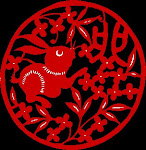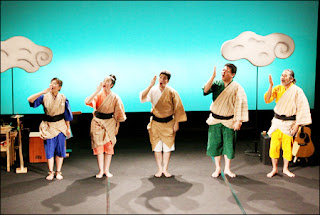<--Milking camel
Many of us have experienced drinking milk from the cows or the goats but have you tried camel's milk? I have the pleasure of drinking camel's milk in Islamabad and it was an absolute accident.
I saw two women and a kid herding 3 camels - right in front of my house. I took some shots and thought that I must go near them to get some clear/closeup photos. I never saw a camel in Islamabad and this was an awesome experience. I've to confirm that Islamabad is not a dessert or anything close to it. It was my first time ever to see an actual/real camel in this city and hence, the excitement. I asked the woman if she sells milk and she said yes, and added: that's her livelihood. I asked how much for a litre and she said 100 rupees or 1USD or 1000KRW only. I got hooked and bought a liter. I had absolutely no idea what it would taste like but then I just wanted to give it a try and curiosity lead to this experiment.
 |
| Camels in front of my house |
One of the woman milked the camel right in front of me ( see the video above). I also paid her some more money to allow the baby camel to drink milk from the mummy camel - since these people do NOT allow them to drink. It was a great experience for all of us.
 |
| They were constantly eating, on extreme left is the baby-camel |
Camel's milk tasted almost the same as cow's milk. If I had NOT seen her milking the camel I wouldn't have guessed it. The consistency was very watery may be they feed them too much water before going for business or may be for some other reasons. I shared this milk with a cat and her 3 kittens + two dogs. All these animals kept smelling it for a while but then they drank it - it was so funny to see how suspicious they were about the milk. Since the milk was organic and was super fresh and this is absolutely rare.
I've previously tried horse, buffalo, cow, goat and sheep's milk. Amongst them all, goat's milk was really difficult to drink since it has a strong smell of some sort that I didn't liked. If we look around then we will see that people have been drinking milk from the yak, the water buffalo, the reindeer, the elk and a few other animals.
Anyhow, a lot has been said and written about the benefits of camel's milk: stories about how good it is for the diabetic patients; how it work wonders against food allergies; it's benefits for children with autism and so on and so forth. I do NOT believe any of this but still I don't care if this is for real or if it is just a hype. Autism is a genetic disorder and hence, except for God's miracle nothing might work. Diabetes has nothing to do with how much insulin camel's milk has - since we can't inject camel milk directly into the body unlike insulin via injections and no wonder if that would have been the case - countries like the United States where kids at young ages are suffering from it would have O.Ked it through FDA but they have not.
In Pakistan, we can sell anything with ideas as wild as you can fly by drinking this or you will go to heaven by killing that and so on. In reality, it is NOT that easy.
Aside all these facts, figures, religion and science, I, for one, thoroughly enjoyed drinking camel's milk. I felt very full for a long time, may be it was psychological.
I believe that there is nothing wrong with trying this new idea, if not much, you will just get to know another type of milk. No wonder it has been around for thousands of years and was one of the main sources of food for nomads. In addition, this will surely run the kitchens of these women/ families who were herding them in difficult weather conditions. I will not mind drinking a cup of camel's milk every day.
On a final note, I wonder what happened to CDA's law on prohibiting animals like donkeys, horses and like to roam around on the streets of Islamabad. :-0


























































 sarahinsouthkorea
sarahinsouthkorea
